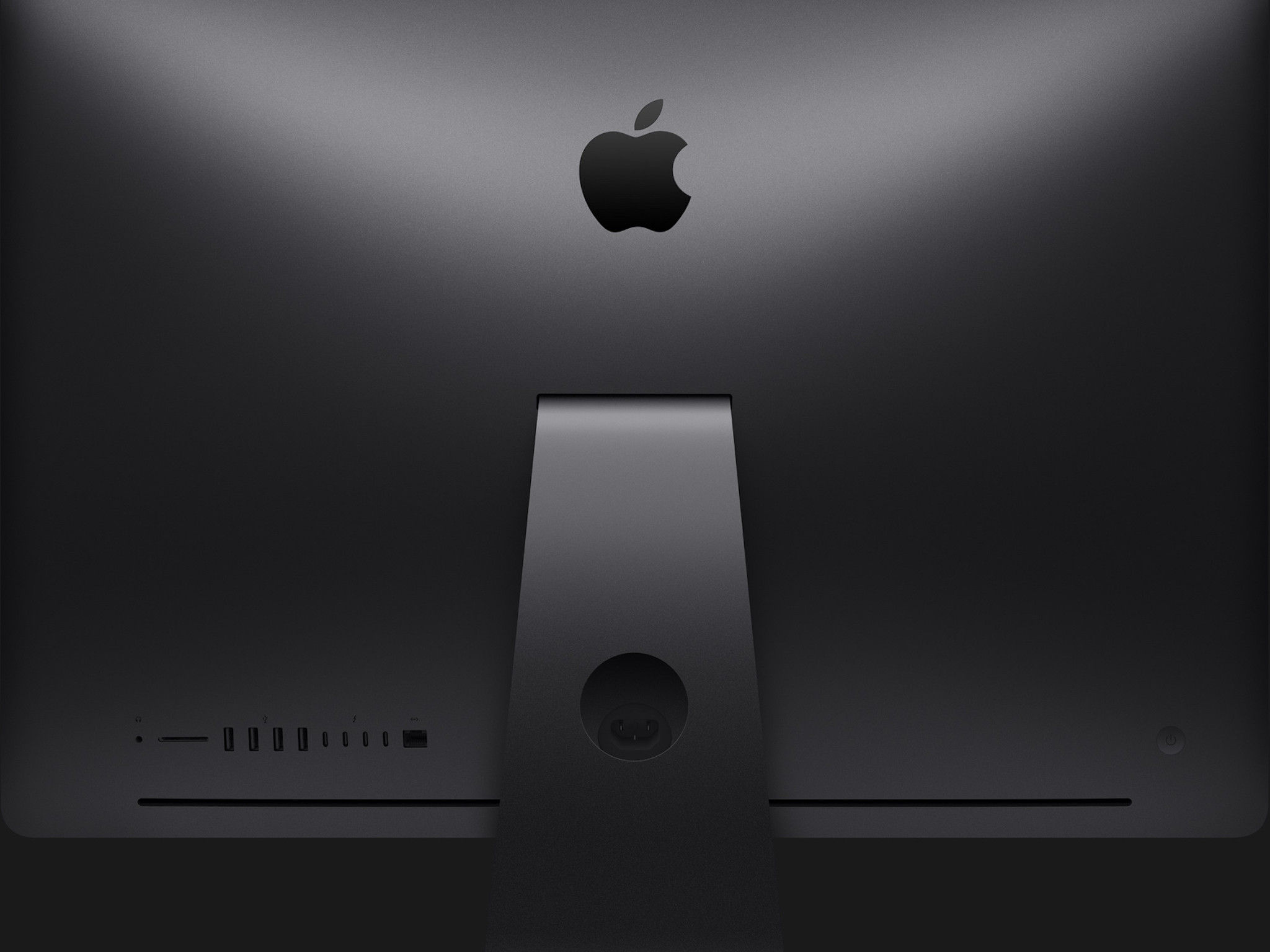Which iMac Pro should you get?

Forget the aging Mac Pro: Apple's iMac Pro has the fastest, most capable processors in a desktop Macintosh. When configuring your machine, you can choose from 8-, 10-, 14-, or 18-core Intel Xeon W processors; these processors are designed to handle heavy rendering tasks without needing the power of the full-fledged Xeon CPU.
iMac Pro review: Beauty of a beast
But which of these monster processors is right for your pro rendering needs? Let's take a look.
Let's talk about Intel's Xeon W processor
As mentioned above, the Xeon W is designed as a workstation-class processor: It fits between the heavy-hitting (and power-consuming) Xeon CPU and the iMac-powering Core i7 consumer processors.
Here's what Anandtech had to say about Xeon W:
The consumer Core i7 has fewer PCIe lanes and the most limited DRAM support, but it's the cheapest. Conversely, the Xeon Gold CPU is easily the most expensive, but it supports up to four sockets, has more L3 cache per core overall, and gets the greatest memory capacity, while incurring a slightly higher TDP in the process. The Xeon-W then sits neatly in the middle, taking advantage of high clock frequencies and pro features with a small bump in price, without forking over for multi-socket support.
All Xeon W processors feature Intel's Turbo Boost and hyper-threading; they also offer four slots for DDR4 ECC RAM, 1MB of L2 cache, 1.375MB of shared L3 cache, and support for AVX-512 vector instructions. This provides an extra boost to both performance and throughput for intense computing tasks.
Xeon W is based on Intel's Skylake chip architecture, rather than the newer Kaby Lake chipset: As a result, processor-accelerated HEVC (H.265) encoding and decoding is limited to 8-bit, not 10-bit.
iMore offers spot-on advice and guidance from our team of experts, with decades of Apple device experience to lean on. Learn more with iMore!
That said, the iMac Pro can still put its processors to work through macOS High Sierra: Those extra cores can help power software-based HEVC 10-bit much, much faster than a standard Kaby Lake iMac can through hardware alone.
How does Xeon W in iMac Pro compare to Core i7 in the standard iMac? Craig A Hunter, writing for Hunter Technology Research:
Moving to a workstation class CPU gives access to more cores, advanced processing features, and a bigger, more scalable, performance envelope than you can get in a standard iMac. Other key advantages are memory capacity and graphics capability. If your work benefits from any of these things, then the iMac Pro is the natural choice.
It's also worth noting that while you can upgrade your RAM after ordering at an Apple Store or Authorized Retailer, the same is not true for the chip — you're stuck with what you order at launch. As such, it's a decision worth weighing before you click that Add to Bag button.
Who should get the 8-core Xeon W processor?
The 8-core Xeon W processor is part of the iMac Pro's base model configuration. It features a 3.2Ghz base speed, with an up to 4.2Ghz boost.
It's the fastest processor at its native speed (3.2Ghz) compared to the other cores, though it's slowest when boosted (4.2Ghz vs the 4.3 and 4.5Ghz of the other processors). It's also the cheapest option of the processors: You'll get the 8-core along with 32GB of RAM, an 1TB SSD, and the Radeon Pro Vega 56 with 8GB of video memory.
The 8-core is an excellent choice for anyone looking to get into the iMac Pro environment: It provides enough solid single- and multi-threaded processing power for most basic pro tasks (like video editing or 2D game development) without breaking the bank. It's also the cheapest option for those who are crazy enough to spend $5000+ on getting a computer in space gray.
If you can't afford to upgrade your processor, you don't need the extra power the higher-core processors provide, and you want to get your computer as quickly as possible, the 8-core is an excellent option for the iMac Pro. You can further augment it with more RAM and the Vega 64 graphics processor for better video, 3D, and VR performance.
Who should get the 10-core Xeon W processor?
The 10-core Xeon W processor is the first step up Apple's processor configurator, and it's a great upgrade: The 10-core model features a 3.0Ghz base speed and 4.5Ghz turbo speed.
It offers the fastest turbo speed of any desktop Mac Apple sells for just an $800 increase in price, along with more cores for multithreaded workflows.
Those who run multiple applications, use applications with multi-threaded workflows, and want the absolute fastest single-core speed during Turbo Boost will do well with the 10-core iMac Pro. Given its relatively-reasonable upgrade price, this model will likely be the popular choice among most iMac Pro users who don't need the mammoth core options present on the upper tiers.
If you can afford to throw a little more money at your iMac Pro and you need great multi-threaded performance and the best single-core Turbo speed, get the 10-core iMac Pro. If you don't have additional cash to spend on extra RAM, you can always make those improvements at a later date.
Don't get the 10-core iMac Pro if you plan on doing a ton of multithreaded processing work (like CPU rendering or running multiple virtual machines) — look instead to the 14- or 18-core machines. If you don't think you'll use a ton of multithreaded processing or you simply don't have the money to upgrade, the 8-core might be the best choice for you.
Who should get the 14-core Xeon W processor?
Here, the big guns come out: The 14-core Xeon W processor is nearly double the upgrade price of the 10-core model ($1600 vs $800), and provides an extra four cores for multithreaded processing. Its Turbo boost is identical to the 18-core model (4.3Ghz), while its standard core is 2.5Ghz.
Users who need massive amounts of multithreading power without having to put down the equivalent of a car payment will appreciate the 14-core model: It's currently the most powerful Mac on the market, and offers lots of processing power for its price.
If you need to render VR environments, compile multiple projects, or use CPU power for massive computations, the 14-core will get you close to maximum power without the price tag of the full 18-core machine.
Don't get the 14-core if you have unlimited funds — the 18-core will suit you better — or if you'd be better suited with a hybrid of single- and multi-threaded tasks, as the 10-core offers.
Who should get the 18-core Xeon W processor?
The biggest, baddest processor Apple has ever put inside a Mac is available with the iMac Pro — as long as you're willing to pay for it. For the simple price of $2400, you can build an iMac Pro with eighteen Xeon W cores, each tagged at 2.3Ghz with 4.3Ghz turbo speeds.
Yup: For the price of a baseline 15-inch MacBook Pro, you can add an additional 10 cores to your computer's baseline model, and get an outrageous amount of multithreaded computing.
It may go without saying, but this model of iMac is not the kind of thing you buy without excess need: without any other improvements, the 18-core upgrade will cost you $7399 — and chances are, you'll want to add some more memory and the better graphics card to fully take advantage of all the machine has to offer.
If you work in VR development, astronomy, or any other field requiring a truly massive amount of multithreaded work — and you have the cash to front for it — the 18-core iMac Pro is the best Mac you can get for the job.
If you don't have the cash, the 10- or 14-core Xeon W will still do a pretty good job. And if you don't work in the above fields, consider looking at the 8- or 10-core models instead.
Which processor would you get?
Planning on buying an iMac Pro? Which processor would suit you? Let us know in the comments.
Serenity was formerly the Managing Editor at iMore, and now works for Apple. She's been talking, writing about, and tinkering with Apple products since she was old enough to double-click. In her spare time, she sketches, sings, and in her secret superhero life, plays roller derby. Follow her on Twitter @settern.


